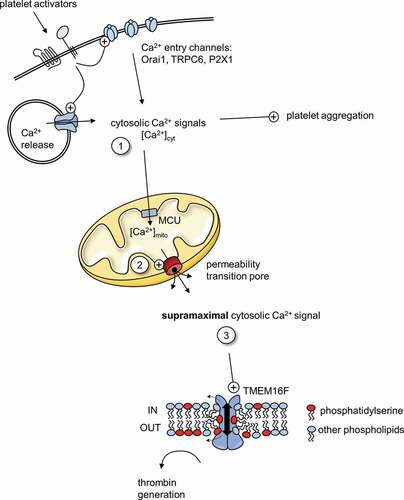Figures & data
Figure 1. Ca2+ signaling in procoagulant platelets
Platelet activators, such as collagen and thrombin, trigger a cytosolic Ca2+ signal (1) through Ca2+ release from intracellular stores and Ca2+ entry through plasma membrane channels. The magnitude and temporal nature of these signals varies between platelets. The cytosolic Ca2+ signals promote platelet aggregation by regulating granule secretion and integrin αIIbβ3 activation (not shown). Some cytosolic Ca2+ is taken into mitochondria via MCU, increasing mitochondrial Ca2+ concentration ([Ca2+]mito). In some platelets, [Ca2+]mito exceeds the threshold for permeability transition pore opening (2). This triggers a ‘supramaximal’ cytosolic Ca2+ signal in these platelets (3), which are now committed to becoming procoagulant platelets. The supramaximal Ca2+ signal activates the TMEM16F, the phospholipid scramblase, resulting in phosphatidylserine exposure on the outer surface of procoagulant platelets.

